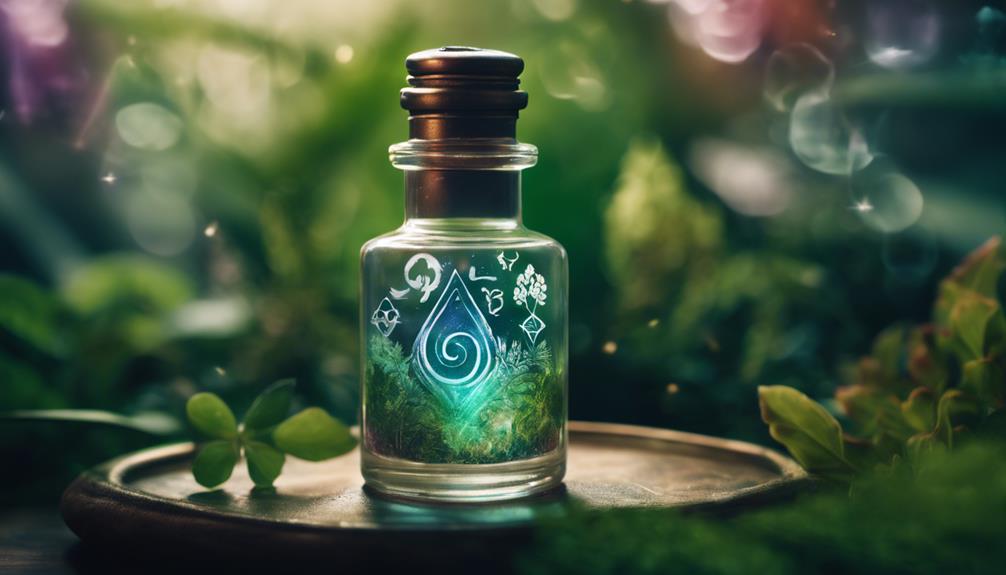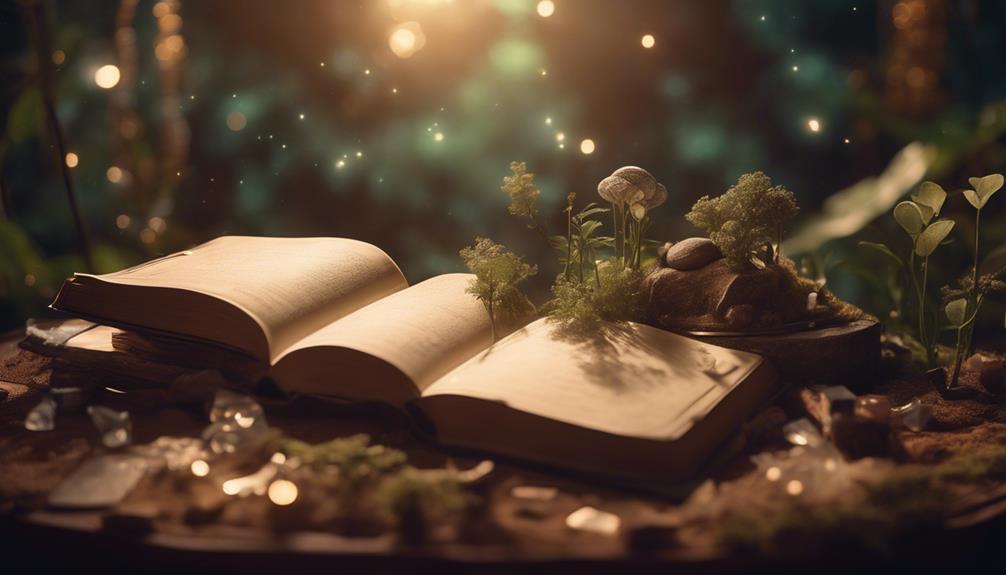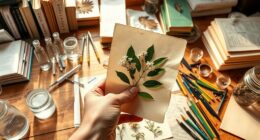We define an elixir in herbalism as a concentrated, sweet liquid extract of medicinal herbs, carefully blended to harness their therapeutic properties and promote overall well-being. By steeping herbs in honey or maple syrup, the active compounds infuse, creating a potent remedy. Herbal elixirs have been used for centuries for their medicinal benefits, and can be customized to suit individual needs. From boosting immunity to aiding digestion, elixirs offer a natural alternative to store-bought beverages. As we explore the world of herbal elixirs, we'll uncover the benefits, precautions, and history behind these potent remedies, and discover how they can be seamlessly integrated into our daily lives.
Key Takeaways
• An elixir in herbalism is a medicinal preparation made by steeping herbs in honey or maple syrup to extract their therapeutic properties.
• The sweetener helps to preserve the herbal extract and makes it easier to consume, often in a more palatable form.
• Elixirs can be customized with the addition of alcohol, such as brandy, or fermented into meads for added potency and flavor.
• The process of creating an elixir allows for the infusion of active compounds from the herbs, making the remedy more effective.
• Herbal elixirs have been used for centuries for their therapeutic benefits, offering a natural and holistic approach to health and wellness.
Understanding Herbal Elixirs
As we explore the world of herbalism, we find that herbal elixirs, fundamentally medicinal herbs steeped in honey or maple syrup, have been used for centuries to harness their therapeutic properties. These medicinal herbs, rich in history, have been utilized to address various health concerns.
By immersing them in honey or maple syrup, we can access their potent medicinal properties. This process allows the active compounds of the herbs to infuse into the sweetener, creating a potent and palatable remedy.
Herbal elixirs can be further customized by combining them with alcohol like brandy or fermenting them into medicinal meads. This ancient practice has been employed to create remedies for a range of ailments, making it an essential aspect of herbalism.
As we explore further into the world of herbal elixirs, we'll discover the numerous benefits they offer and how they can be incorporated into our daily lives.
Crafting Your Own Elixir
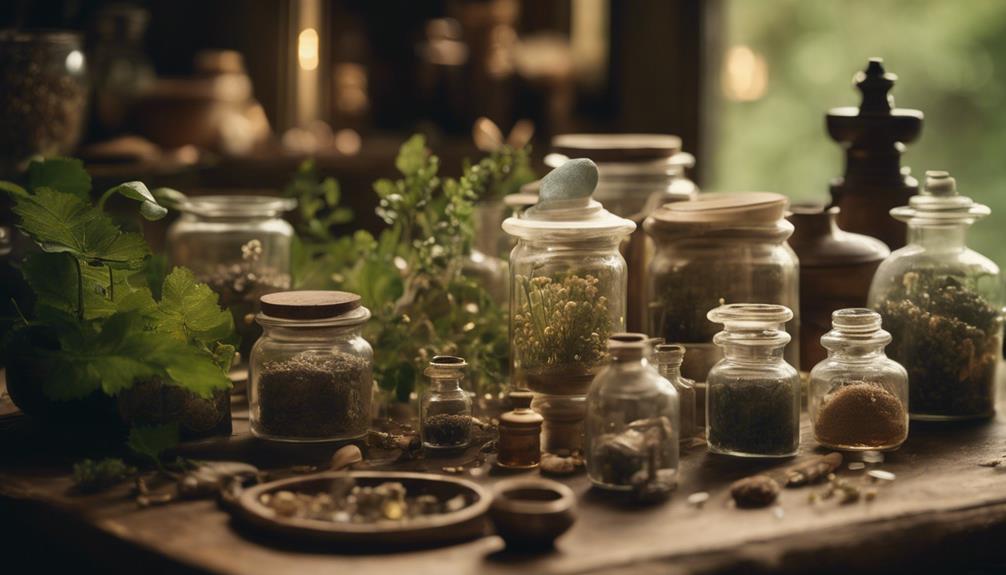
As we venture into crafting our own elixirs, we'll need to carefully gather ingredients that will work harmoniously together, and wisely select the herbs that will form the foundation of our blend.
This process involves a thoughtful approach, considering the unique properties of each herb and how they'll interact with one another. By doing so, we'll be able to create a personalized formula that caters to our individual needs and preferences.
Gathering Ingredients Wisely
We start by selecting fresh or dried herbs renowned for their medicinal properties, ensuring we're using only the best ingredients for our elixir. When gathering herbs, it's essential to consider the environmental impact and choose sustainable sources to support the ecosystem. We research the specific benefits and potential side effects of each herb before incorporating them into our elixir, ensuring a safe and effective final product.
| Herb | Medicinal Properties | Potential Side Effects |
|---|---|---|
| Ginger | Anti-inflammatory, Digestive aid | Stomach upset, Allergic reactions |
| Turmeric | Anti-inflammatory, Antioxidant | Stomach upset, Interactions with medications |
| Echinacea | Immune system booster, Anti-inflammatory | Allergic reactions, Interactions with medications |
Blending Herbal Formulas
With our medicinal herbs selected, we now combine them in precise ratios to create a customized elixir that addresses our specific health concerns and enhances our overall well-being.
When blending herbal formulas, we consider the unique properties of each herb and how they interact with one another. This allows us to craft an elixir that targets our specific health goals, whether it's boosting immunity, alleviating stress, or promoting digestive health.
By experimenting with different herbal combinations and ratios, we can develop unique elixirs tailored to our individual needs. Understanding the properties of different herbs and their interactions is essential in formulating effective and potent elixirs with desired effects.
As we blend our medicinal herbs with honey, alcohol, and other ingredients, we're creating a natural and holistic approach to wellness. By making our own elixirs at home, we're taking control of our health and opting for a healthier alternative to store-bought beverages.
With careful consideration and attention to detail, we can craft herbal elixirs that truly support our journey towards optimal health.
Essential Ingredients and Tools
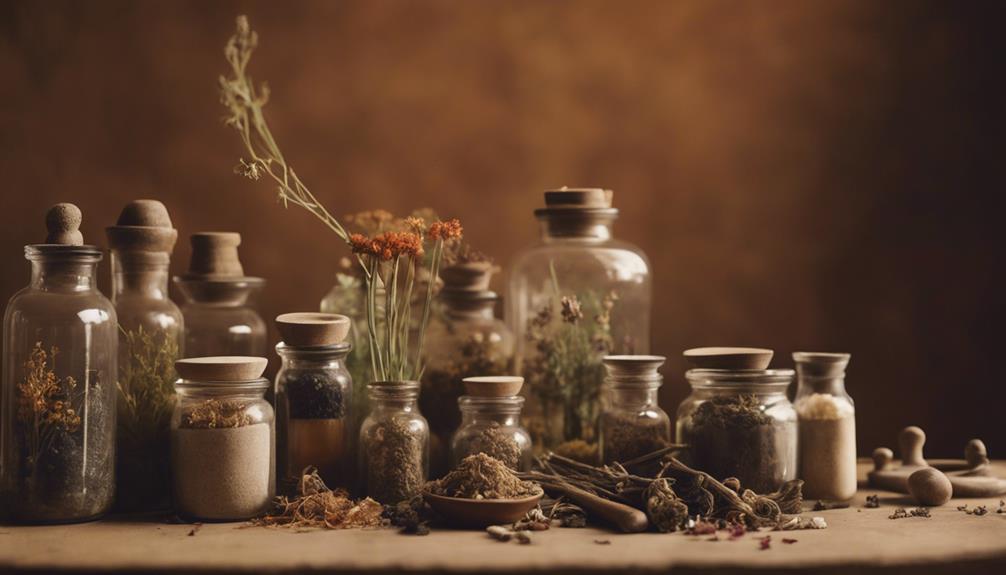
As we explore the world of herbal elixirs, we'll need to gather the essential supplies and tools to get started.
We'll be working with herbal medicine supplies, such as medicinal herbs, honey, and alcohol, as well as specific tools like Mason jars and fine mesh strainers.
Herbal Medicine Supplies
When crafting herbal elixirs, we rely on a few essential ingredients and tools to guarantee the proper extraction of medicinal properties from the herbs. Our herbal medicine supplies include medicinal herbs, honey or maple syrup, and alcohol like brandy. We also need tools like pint jars, strainers, and dark cupboards for storage.
Mason jars are particularly useful, providing an ideal environment for steeping and storing our elixirs. These jars allow the herbs to infuse properly, ensuring our herbal remedies are potent and effective.
Herbal tinctures are another vital component in our elixirs, providing concentrated herbal extracts for added potency. We store them in dark cupboards to preserve their medicinal properties. By having the right ingredients and tools, we can make sure that our herbal elixirs are of the highest quality, providing the best possible results for those who use them.
With the right supplies, we can create herbal remedies that truly make a difference in people's lives.
Elixir Preparation Tools
We rely on a few essential ingredients and tools to craft our herbal elixirs, including fresh or dried herbs, high-quality honey, and a suitable alcohol like brandy or vodka.
When it comes to preparing our elixirs, we turn to a trusty Mason jar, which allows us to steep our medicinal herbs in a liquid solution. The sealable lid guarantees that the flavors and properties of the herbs are sealed in, allowing the mixture to mature and intensify over time.
High-quality honey is another key ingredient, providing sweetness and acting as a natural preservative for the herb-infused liquid. Meanwhile, the alcohol helps to extract the medicinal properties from the herbs and extends the shelf life of the elixir.
Herbal Extraction Methods
We craft our herbal elixirs using a range of extraction methods, from revealing the beneficial properties of medicinal herbs by steeping them in honey, alcohol, or other liquids. The goal is to access the plant's medicinal potential, and the right extraction method makes all the difference.
For instance, we use maceration to extract the properties of delicate herbs, while percolation is better suited for tougher plant material. Infusion is another method we employ, where we steep herbs in hot water to release their active compounds.
When making our herbal elixirs, we select high-quality herbs as the essential ingredient, combined with alcohol like brandy or vodka, and sweeteners like honey or maple syrup. Our tools of the trade include Mason jars for preparation, strainers for filtering, and dark cupboards for storing during the steeping process.
Exploring Elixir Recipes

Let's immerse ourselves in the world of elixir recipes, where we can mix and match herbs and sweeteners to create unique concoctions that not only tantalize our taste buds but also provide a boost to our well-being.
As we explore these recipes, we can experiment with different combinations of medicinal herbs in honey or fresh herbs to create a personalized blend. Here are some ideas to get us started:
- Infusing calming herbs like chamomile or lavender in honey for a soothing elixir
- Combining energizing herbs like ginseng or yerba mate with maple syrup for a natural energy boost
- Mixing fresh herbs like peppermint or lemon balm with honey for a revitalizing digestive aid
- Creating a sweet and spicy elixir with cinnamon, ginger, and honey
- Crafting a floral elixir with rose petals, lemon verbena, and honey for a calming and uplifting drink
As we explore the world of elixir recipes, we can tap into the medicinal properties of herbs and create unique blends that cater to our individual needs. With a little experimentation and creativity, we can uncover the full potential of herbal elixirs and discover a world of flavor and wellness.
Benefits and Precautions
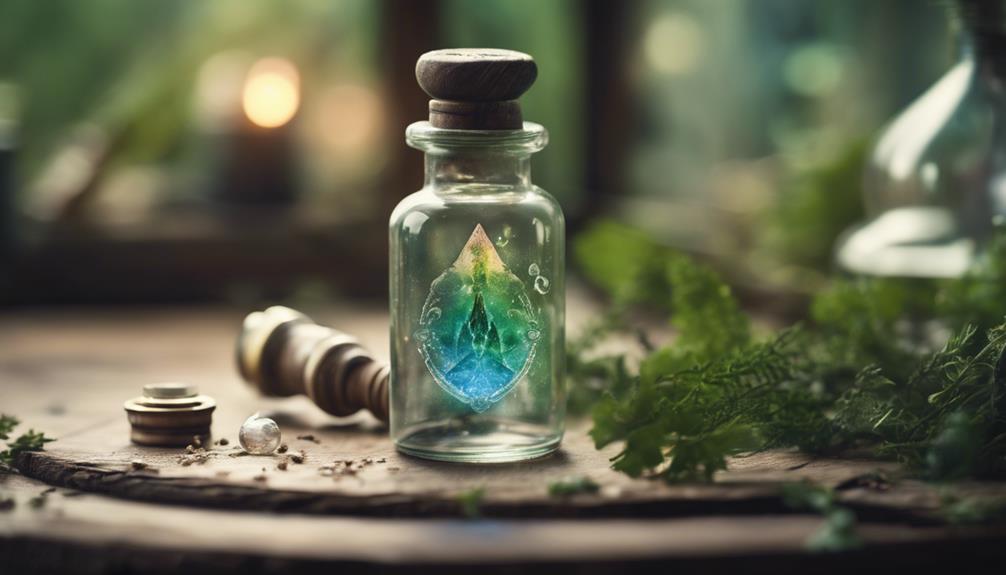
As we explore the world of herbal elixirs, it's important to recognize both the benefits and precautions associated with these potent concoctions. Herbal elixirs offer a multitude of health benefits, including boosting immunity, aiding digestion, and promoting overall well-being. They can be a natural alternative to store-bought beverages, providing a customizable way to incorporate medicinal herbs into our diet.
Additionally, making herbal elixirs at home allows us to control the quality and purity of ingredients, ensuring we get the most out of their medicinal properties.
However, we must exercise caution when consuming herbal elixirs, especially if we've allergies or sensitivities to certain herbs or ingredients. It's crucial to consult with a healthcare provider or herbalist before incorporating herbal elixirs into our routine, especially if we're pregnant, breastfeeding, or have existing health conditions.
Choosing Sustainable Herbs

When selecting herbs for our elixirs, we must prioritize sustainability to guarantee a positive impact on the environment and local communities. This assures that our pursuit of wellness doesn't come at the cost of the planet's.
Choosing sustainable herbs is essential, as it directly affects the ecosystem and the people involved in the supply chain.
Here are some key factors to keep in mind when opting for sustainable herbs:
- Look for herbs that are certified organic, wildcrafted, or grown using sustainable farming practices.
- Sustainable herb cultivation helps protect biodiversity, prevent soil degradation, and promote ecological balance.
- Supporting sustainable herb practices contributes to the long-term availability of medicinal plants for future generations.
- Plant matter and dried herbs sourced sustainably reduce the risk of contamination and ensure the quality of our elixirs.
- By choosing sustainable herbs, we're promoting fair labor practices and supporting local economies.
Elixir History and Origins
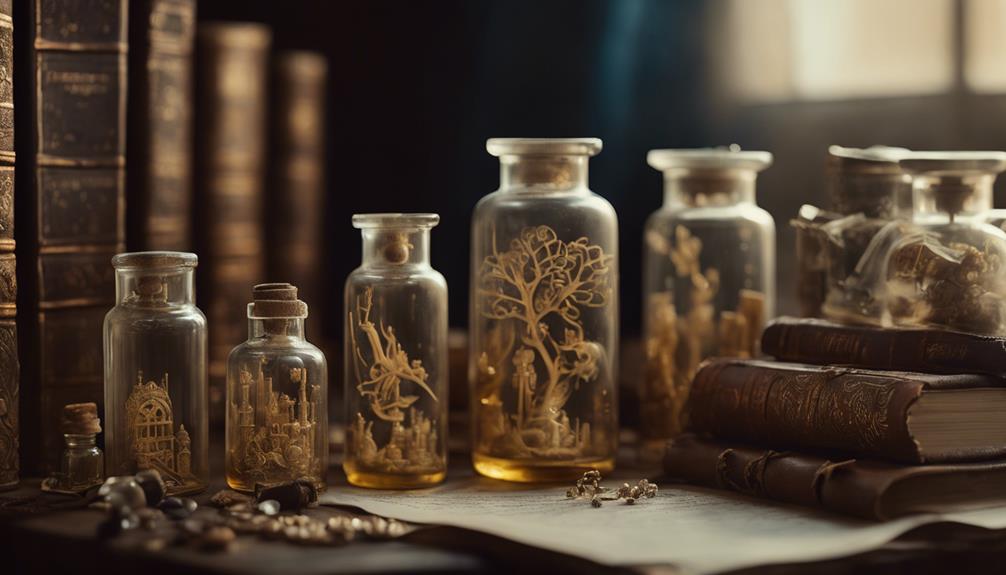
Exploring, it's crucial to understand the historical context of elixirs. We explore the fascinating history of elixirs, tracing their roots back to medieval alchemy. In the Middle Ages, alchemists sought to create gold by changing base metals, believing that elixirs held the key to transmutation. Over time, the concept of elixirs evolved, and they became associated with prolonging life and promoting health.
Today, an elixir is usually a blend of medicinal herbs, honey, and alcohol or other liquids, crafted to create a potent and beneficial remedy. This process allows for creativity and customization, offering a sweet, rich, and potent way to enjoy the benefits of medicinal herbs.
| Alchemy Era | Elixir Purpose |
|---|---|
| Medieval Alchemy | Transmutation of base metals to gold |
| Late Middle Ages | Prolonging life and promoting health |
| Renaissance | Medicinal properties and health remedies |
| Modern Era | Natural remedies and holistic wellness |
Common Elixir Misconceptions
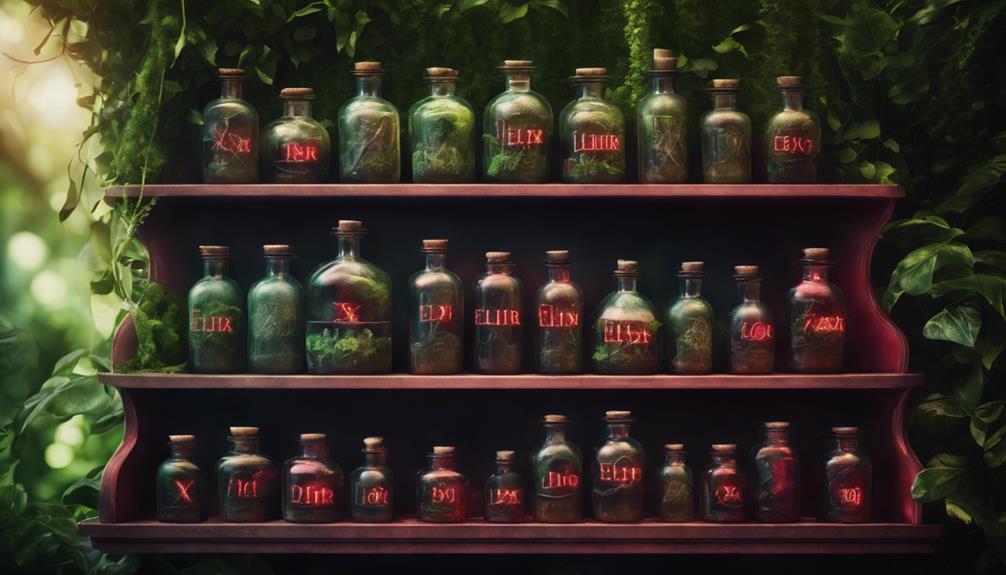
Despite their long history and proven medicinal benefits, elixirs are often misunderstood, and it's time to set the record straight about these potent remedies. We've found that many people have misconceptions about elixirs, and we're here to clarify the truth.
Here are some common misconceptions about elixirs:
- They're only used for recreational purposes (when in fact, they're primarily used for medicinal benefits in herbalism)
- They're difficult to make (but they can be easily prepared at home with basic ingredients and tools, like filling a jar with plant material and a liquid)
- They're only effective in large quantities (when even small doses can provide health benefits)
- They all have a bitter taste (but they can be customized to suit individual preferences and can be sweet, fruity, or herbal in flavor)
- They're not worth the effort (when they can be a valuable addition to a natural health routine)
Frequently Asked Questions
What Does Elixir Mean in Medicine?
When we think of the term 'elixir' in medicine, we often associate it with a magical potion that grants eternal youth or perfect health.
However, in reality, an elixir in medicine is a liquid preparation that combines medicinal herbs with other ingredients to promote health, treat ailments, and provide a concentrated form of herbal benefits.
It's a potent and concentrated remedy that can be tailored to address specific health concerns or overall well-being.
What Is the Pharmaceutical Definition of Elixir?
We've heard a million times that an elixir is a magical potion that grants eternal youth, but let's get real – in pharmaceutical terms, an elixir is simply a sweetened hydroalcoholic solution containing medicinal substances.
It's a liquid preparation used to administer medications in a palatable form, where the alcohol acts as a solvent to extract and preserve the medicinal properties of herbs or drugs.
What Is the Spiritual Meaning of Elixir?
We explore the spiritual meaning of elixir, which transcends its pharmaceutical definition.
To us, an elixir represents a catalyst for spiritual growth, symbolizing inner alchemy and spiritual evolution.
We believe elixirs possess mystical properties that enhance our spiritual experiences, facilitating harmony between the physical and spiritual worlds.
What Is the Definition of Elixir?
As we explore the concept of elixirs, we're reminded of the ancient alchemists' pursuit of the Philosopher's Stone, a mythical elixir of life.
But, what exactly is an elixir? We're not talking about a magical potion or a mystical drink.
In reality, an elixir is simply a medicinal liquid preparation, typically made by steeping herbs in alcohol, honey, or a combination of both.
Conclusion
As we conclude our exploration of herbal elixirs, let's consider the example of Sarah, who crafted her own stress-relieving elixir using ashwagandha and passionflower. After incorporating it into her daily routine, she reported a significant decrease in anxiety and improved sleep quality.
Such outcomes highlight the potential benefits of herbal elixirs when approached with knowledge and caution. By understanding the definition, crafting process, and precautions, we can harness the power of herbal elixirs to enhance our well-being.

